Nineteenth-century Italian art and some of its offshoots that ventured into the decades of the following century have long enjoyed lukewarm fortunes in Italy. The rejection by formalist critics of all idealizing movements of culture accused of being literary (think of Roberto Longhi’s well-known condemnation) and the desire to measure all Italian experiences by the yardstick offered by the coeval French experiences were only some of the main reasons that did not allow the understanding and acceptance of a period that was instead extraordinarily prodigal in novelty and that laid not a few premises for some aspects of the art of the new century. Among the illustrious victims of these preconceptions is also Divisionism, which remained for decades relegated to the understairs of Italian culture, as Raffaele Monti pointed out, only to be slowly rehabilitated from the 1960s onward.
Study after study, exhibition after exhibition, this complex artistic phenomenon was rediscovered, and the historical Divisionists of northern Italy were gradually joined by all the other protagonists of the fundamental Tuscan and Ligurian experiences, that of Piedmont and Rome, finally rededicating Divisionism and its artists to art history. And if usually, when an artistic movement is reevaluated only with considerable delay, the most important works are at that point in private collections or gone missing, we can well rejoice that this did not happen for Divisionism.
In fact, when it was thought that all the collecting games had been played out, a far-sighted foundation, the Fondazione Cassa di Risparmi di Tortona, gave birth in less than two decades to the most important collection on Divisionism, and in fact to the only museum entirely devoted to this movement in Italy.

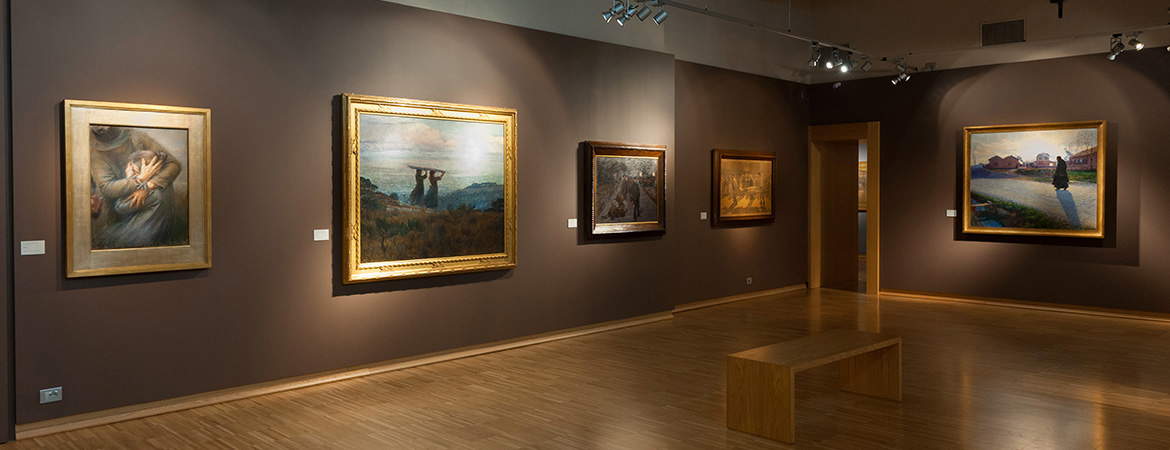




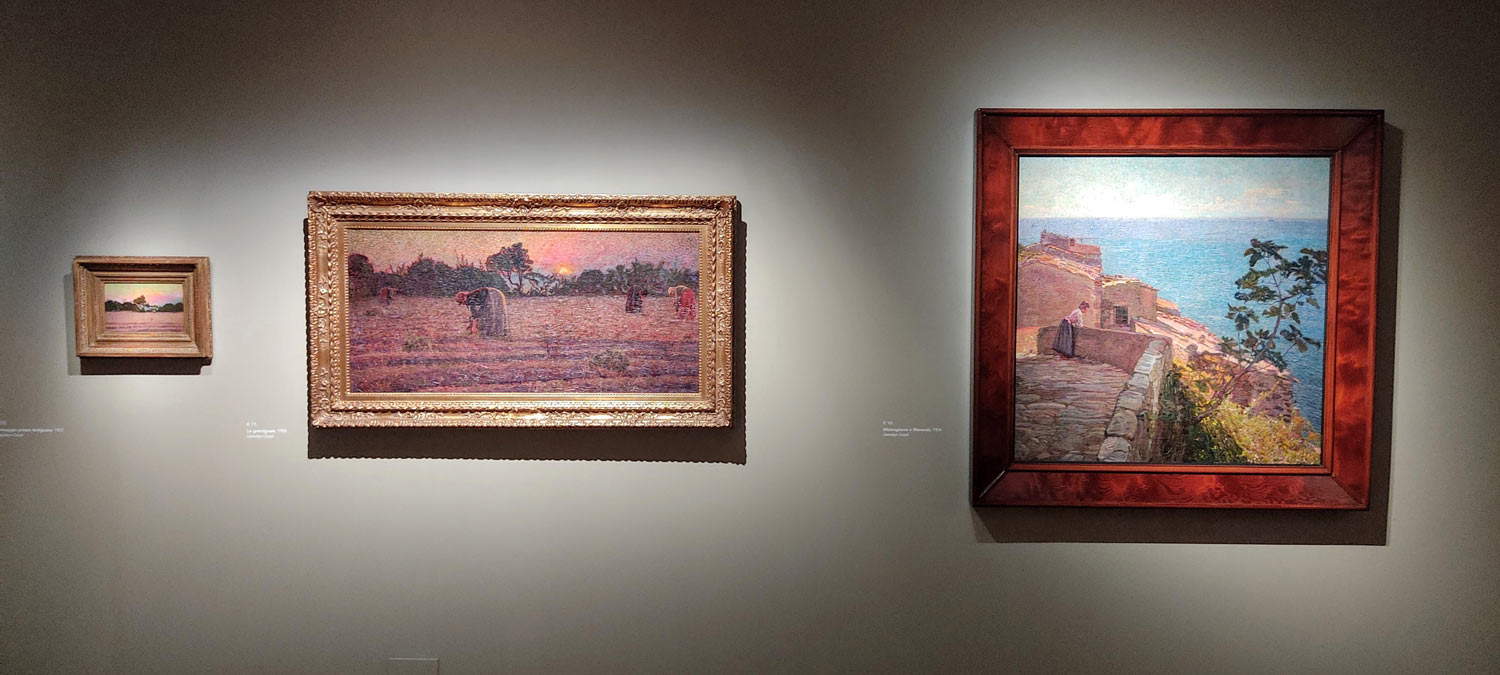
Inheriting the works of the banking entity from which it takes its name, the original nucleus of this extraordinary collection could count on a number of works by Giuseppe Pellizza da Volpedo, an important protagonist of Divisionist and socialist painting who was born a few kilometers from Tortona. With targeted acquisitions, the Foundation wanted to enhance the primigenial core of his genius locii, the context in which he worked, his pupils, his acquaintances. But this design has taken on ever larger dimensions, and link after link has given rise to this extraordinary space dedicated to Divisionism, where not only does each acquisition meet the highest quality criteria, but nothing is left to chance such as the careful choice of period frames, not to mention the medieval building with Roman vestiges that houses the museum, connected by a twentieth-century architectural appendage. The picture gallery is certainly not a huge museum, but in its limited spaces it manages to render with great clarity the complexity of an artistic phenomenon that declined in different geographical locations and in decidedly varied and contradictory ways.
As is well known, Vittore Grubicy De Dragon, an important merchant-artist figure, was “the apostle of Divisionism” (as Fortunato Bellonzi baptized him). The Lombard, through his sojourns abroad and reading specialized journals, had come to know (albeit briefly) about the scientific theory of colors and its application in painting with the division of color and the search for luministic effects. It was through his proselytes that a cohort of Lombard artists, at the end of the 19th century, made these researches their own, declining them each according to their own sensibilities. In Lombardy the ground for Divisionism was particularly fertile, since these artists trained in the wake of Scapigliatura had already made their own the anti-academic researches on the rendering of a vibrant atmosphere of color and figures bathed in light. These obviously include Giovanni Segantini, Giuseppe Previati, Angelo Morbelli and Emilio Longoni.
In canvases such as Incensum Domino! or Vecchine Curiose, Morbelli begins to profit from his own personal, more pointillistic Divisionism, where tight architectural compositions are made vibrant by the search for luministic effects that give an almost tactile rendering of the atmospheric dust hit by light rays. His black masses thus become vibratile, yet never lose their plasticity. The theme of old age, absolutely congenial to the painter of reflective character, was probed at length by Morbelli, who had drawn for his iconographic repertoire from the Pio Albergo Trivulzio, a famous Milanese charity foundation, as early as 1883 with Giorni Ultimi, and in Tortona found in Mi ricordo quand’ero fanciulla a formidable essay.

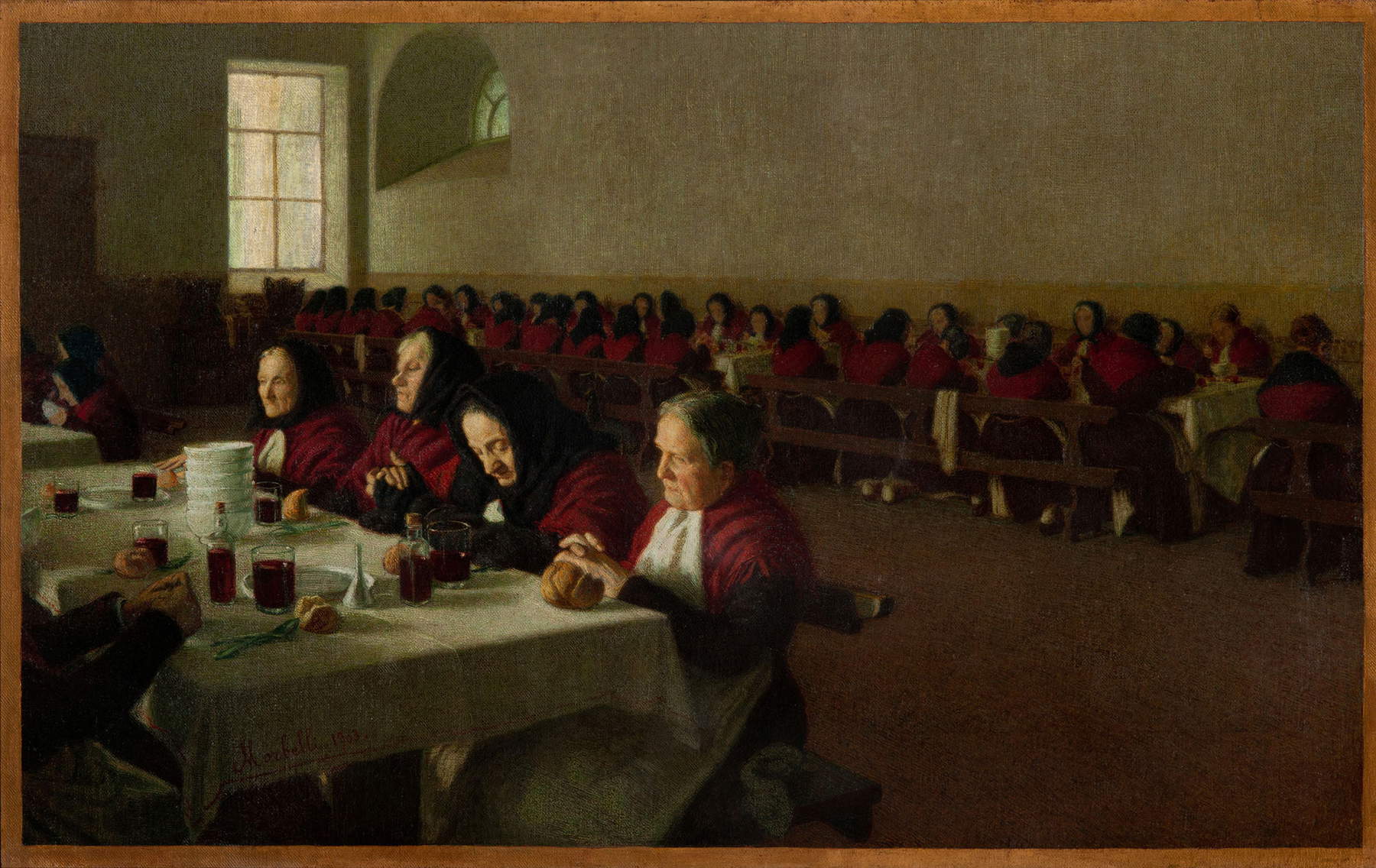
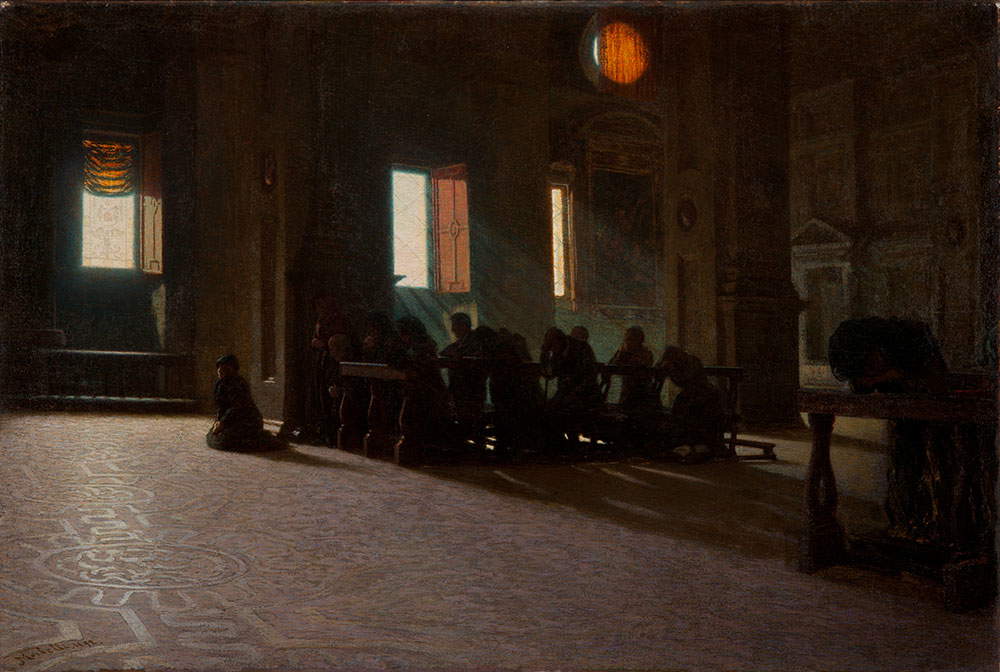
Giuseppe Previati was among the Divisionists the most idealistic, departing more radically than the others from the natural datum to create dreamlike works with strong Symbolist overtones. The highly criticized Maternity of 1891 is the manifesto of this painting. In Penombre, painted between 1889 and 1891, Previati still moves between the late Romantic-realist culture and his new aspiration for a transcendental painting, while in the other works in Tortona, La via del Calvario and Adorazione dei Magi, he has already arrived at that decomposed filiform brushstroke in which color becomes luminous and impalpable matter, which accentuates the lyrical and abstract character of his works. Giovanni Segantini, on the other hand, prepares an intuitive Divisionism, whose interest is all in capturing the secret of light, so important to the painter from Trentino, since it is the primordial secret to which all living beings are fatally bound, and the hinge between earthly nature and heavenly truth. A drawing of Ave Maria at Trasbordo, a nodal work in Segantini’s career, and the Hay Harvest, a study of the painting of the same name preserved in Saint Moritz, are preserved in Tortona.
Of the local genius Giuseppe Pellizza da Volpedo, it is possible to grasp much of the artistic parabola, from Factorian reminiscences in works such as the Woman of the Emigrant of 1888, to sympathies for a painting of strong political commitment and militant socialism, to which he had approached thanks to his frequentations with hisLeghorn friend Plinio Nomellini, to the scientific breakdown of color in works such as the Holy Family or The Portrait of Giovanni Cantù, and then to a painting that has the audacity to become absolute, universal and paradigmatic,of an idea as is precisely the work The Bridge. The painting, which only apparently could appear to us as a view painting, becomes instead an essay with allegorical bearing, and if at first the Piedmontese had still given it a humanistic valence, where the bridge became a symbol, as he writes “of the current social legislative architecture that supports those who have and crushes those who have not.”, later he reinterprets it by operating a translation in the message, becoming an ultimate truth of the world in which “not only is bridge the architectural work that grand; even the child who binds his parents is bridge; bridge is the herd of sheep that stands between the shepherd boy and the shepherd girl; bridge the migrating birds and the clouds that cross mountains and oceans.”
At the dawn of the new century, pointillist painting offered itself to artists with multiple valences: the possibility of probing the unfathomable, the immaterial, but also as a far more earthy opportunity, with feet firmly planted on the ground, dealing with the new yearnings for freedom, class struggle, upheavals and the lives of the last. Plinio Nomellini was in this great precursor, with The Strike first, Morning in the Workshop and then Piazza Caricamento (anticipatory of the Fourth Estate), the theme of labor and proletarian struggles becomes the protagonist, so much so that it even earned him an imprisonment for anarchist subversion. But he is not the only one to turn to social themes; Tortona is also home to a valuable painting by another Leghorn artist, Gino Romiti, Emilio Longoni ’s Venditrice di Frutta and Attilio Pusterla’s Le cucine economiche.

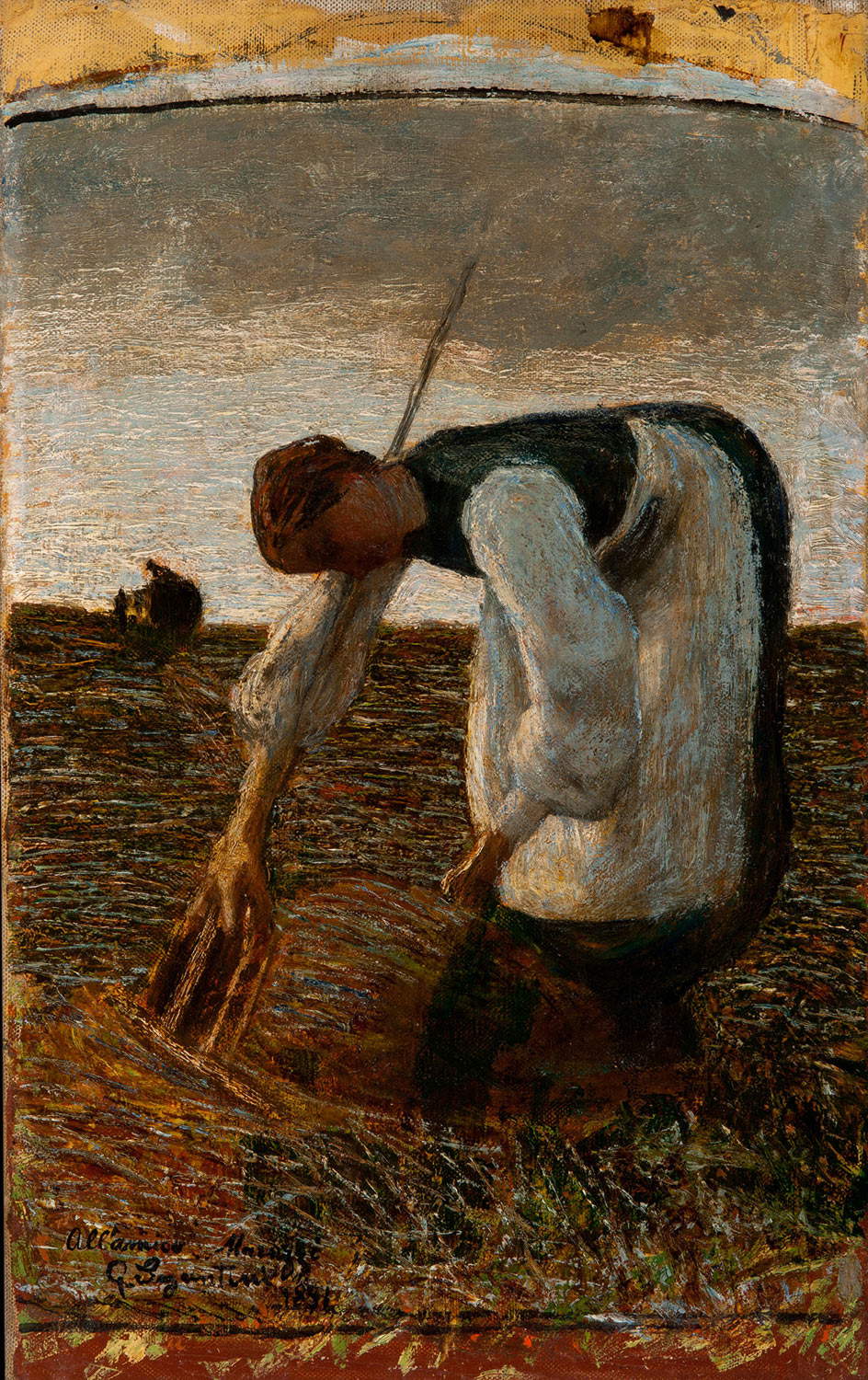


But the social claims, so alive in the last decade of the 19th century, came to a disorienting halt when in 1898 General Bava Beccaris quelled with unprecedented carnage the Milan Riots, unleashed over working conditions and the rising price of bread; more than 80 people were left on the ground and an untold number of wounded.
Although it is usual to identify 1898 as the end of the historical experience of Divisionism, it certainly did not end with the end of the century, but rather its ramifications continued into the first decades of the following century, where a generation of new artists made the divided brushstroke their own to arrive at even very different solutions. In the museum’s modern appendix, one can follow the path of Divisionism with other capital works by Plinio Nomellini himself, such as The Gulf of Genoa (Nomellini routed painters active in Liguria such as Giorgio Kienerk and Rubaldo Merello toward Divisionism), but also Alfredo Müller, a painting that historiography traces as fundamental for an entire generation of Tuscan and particularly Leghorn artists, including Llewlyn Lloyd, Baracchini Caputi and Raffaello Gambogi, all of whom are in the collection, who could learn from their cosmopolitan fellow citizen how to surpass the Macchiaioli lesson and bring it up to date with French dictates. The divided brushstroke became increasingly effervescent and electric, the bearer of moving energies as for Giuseppe Cominetti in his scenes of wild dances or war.
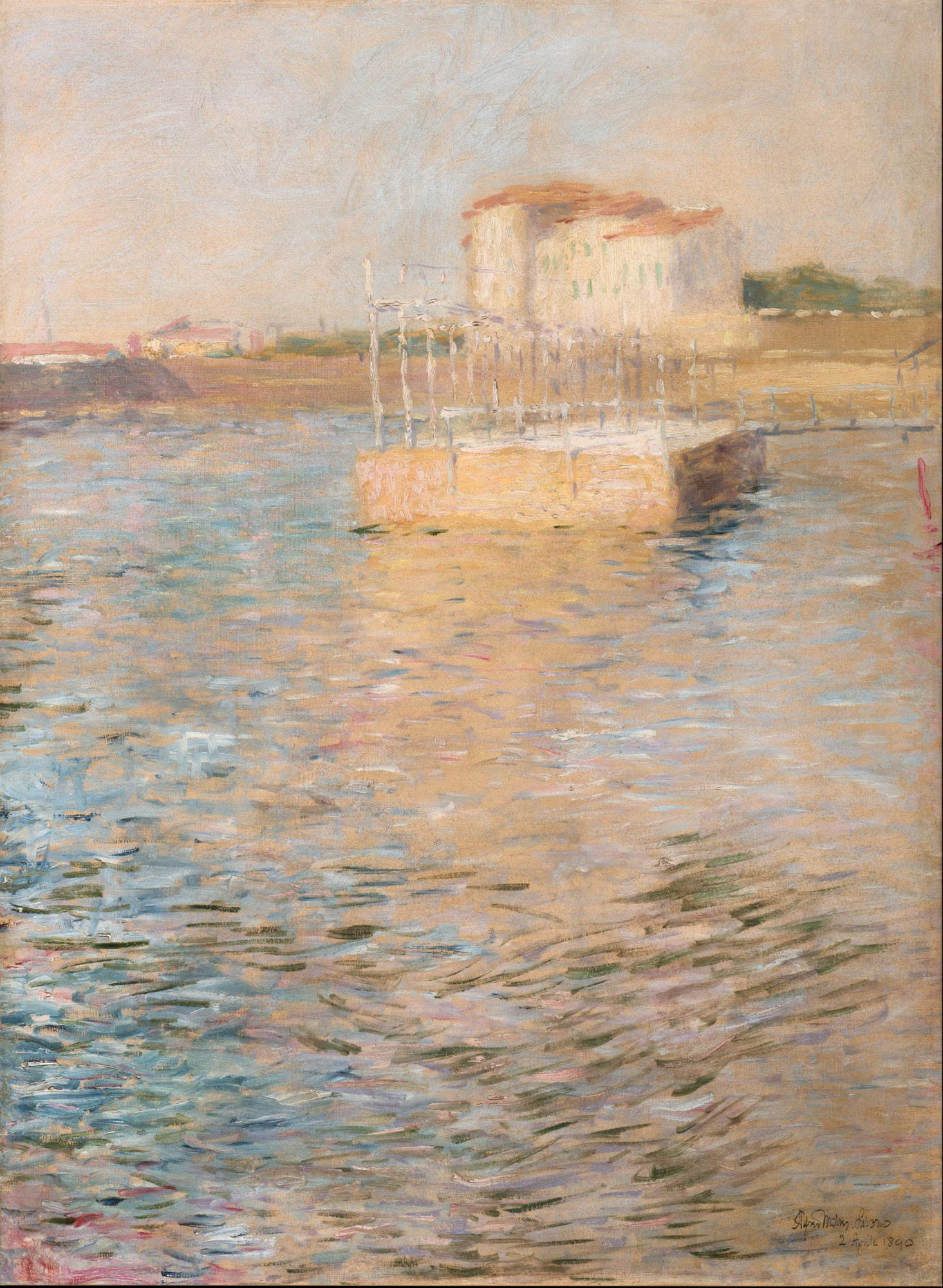
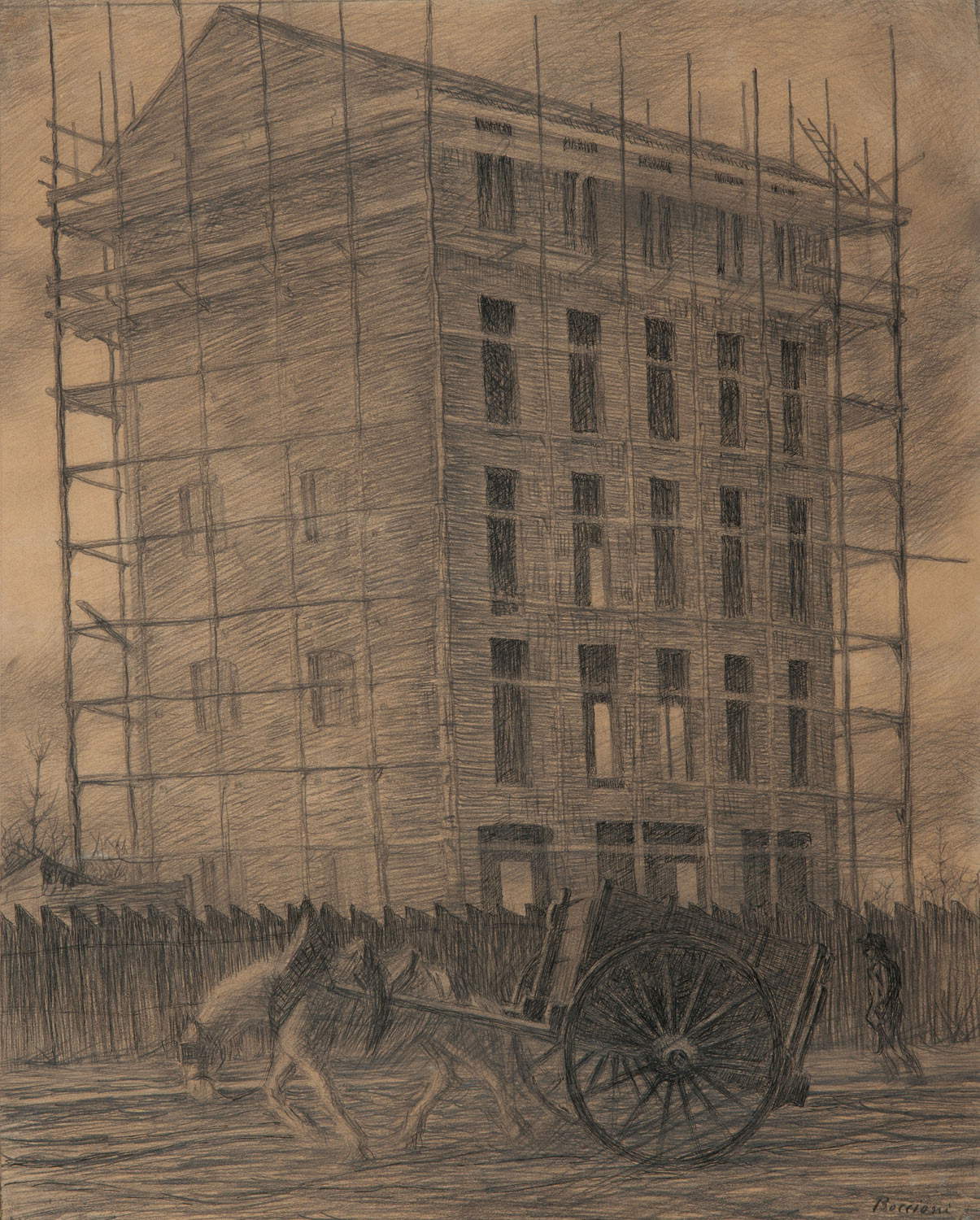
After all, the new century had opened with lectures by Giacomo Balla, who had approached Divisionism precisely in Piedmont, and at whose school studied the painters who later gave life to the new Futurist grouping, such as Gino Severini, Umberto Boccioni and Mario Sironi. The divided brushstroke thus becomes an expression of the energy that would connote the Futurist movement, and which can be relived in Tortona through some of Boccioni’s works, such as the Portrait of Armando Mazza and the drawing Houses under Construction, which seem to foreshadow the famous painting The City that Salt housed at MoMa.
Divisionism fueled Futurist painting, but it also climbed down autonomous paths as in the case of the other Tortonese painter Angelo Barabino, declined into Art Nouveau compositions with Galileo Chini, or became almost a profession of faith with Grubicy’s new pupils, of whom the most faithful was Benvenuto Benvenuti.
The museum, then equipped with an important specialist library, has carved out a role for itself as one of the most prestigious study centers for understanding Italian art at the turn of the 19th and 20th centuries. The picture gallery stands as one of the most shrewd cultural projects launched in recent times in our country, exceptional for its features of systematicity and unity, research and quality, combined with the’interest in enhancing the culture of a territory and reconnecting it with the national one, in a context that is neither ephemeral nor solidified, but rather magmatic and constantly growing, no small feat for a nation anesthetized by blockbuster exhibitions geared to easy success.
Warning: the translation into English of the original Italian article was created using automatic tools. We undertake to review all articles, but we do not guarantee the total absence of inaccuracies in the translation due to the program. You can find the original by clicking on the ITA button. If you find any mistake,please contact us.